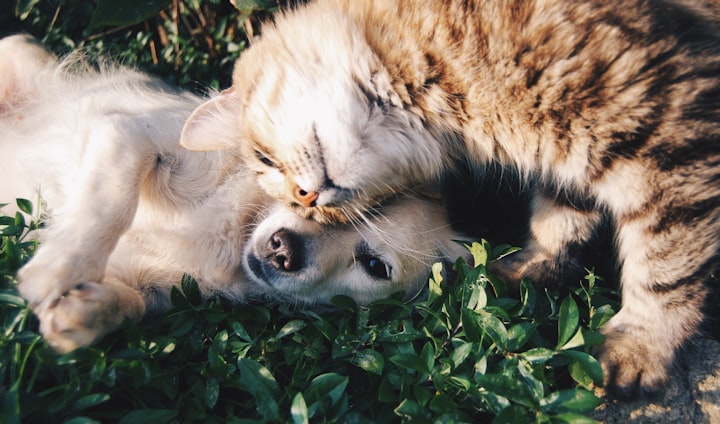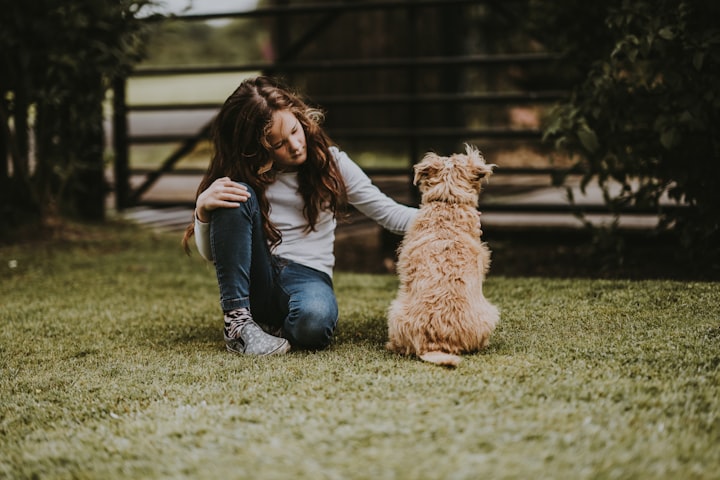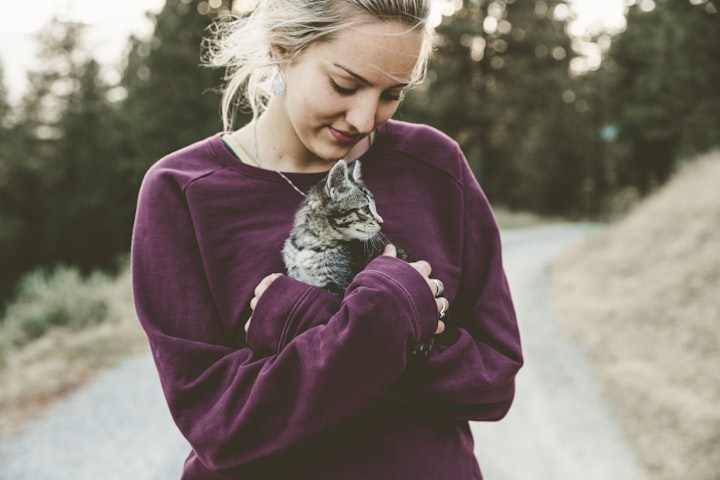How Pets Could Be a Solution to Touch Deprivation
Research explains how your fluffy companion could provide you with the social interaction you’re missing.

Do you remember the days when we could kiss our loved ones with no fear? Or when we could hug a stranger for a nice deed? Well, now that the handshakes are put on hold and people are requested to distance, those heartwarming acts are harshly replaced by fear and anxiety.
With the global pandemic and lack of human-to-human contact, psychological effects, such as loneliness, are widely prevalent. Despite the reliance on technology to combat isolation, one critical social feature is missing: touch.
“COVID-19 has thrown touch into the spotlight, revealing how much we need touch to keep us mentally well.” — Janette Young
Humans are wired to be touched. Physical contact is critical for not only mental health but emotional and physical health as well. With the necessity of social distancing, it is clear that the feeling of touch deprivation is increasing.
Based on a survey conducted on Facebook in April, 60 percent of people reported experiencing low to high levels of touch deprivation. This included people that live alone and those that live with others. The survey unveiled that 32 percent of people reported touching their partner a lot, and 21 percent said they had frequent physical contact with their children
So how can we use this information to help us?

How to Know if You’re Touch Starved
There is no certain way to know, but according to Healthline, if one is touch starved, they usually experience intense feelings of loneliness or a lack of attention.
Common symptoms include:
1. Feelings of depression
2. Anxiety
3. Stress
4. Low relationship satisfaction
5. Difficulty sleeping
6. A tendency to avoid secure attachments

How Pets Can Help Us to Evade Touch Deprivation
Like the millions of you who live with pets, isolating myself from the outside world during this pandemic without my pet seems impossible. The fear of getting close to anyone at this time is certainly unavoidable, so having my fluffy companion by my side eases the pain.
With around more than half the global population owning pets, benefits for both physical health and mental health have been greatly reported.
As most pet owners would agree, pets can provide a person the physical contact that they’re missing. Pets are also believed to relieve some of the stress and loneliness that the public health restrictions could cause. This could explain the increase in demand for pets since the beginning of the pandemic.
Janette Young, a lecturer in health sciences at the University of South Australia, with a team of researchers, conducted a study that examined the benefits of owning pets during the pandemic.
More than 90 percent of the 32 participants mentioned touching their pets. A sense of comfort, relaxation, and familiarity was experienced when individuals touched their pets, especially during times of distress or sadness. A great number of participants included that their pets knew when the owner didn't feel well and would then get physically closer to them.
“People need touch and possibly so do many of the animals we keep as pets,” Young said.
She mentioned that people's close, caring, and touching relationships with their pets could fill a touch gap that many people currently have.
According to Tiffany Field, Ph.D., when one pets their animal, they apply pressure which allows them to feel their vertebrae or ribs. “They’re getting a pet massage, in a sense,” Field said via Healthline.
Due to the pressure that is applied during massage, the nervous system slows down, thus reducing heart rate and blood pressure. Brain waves related to relaxation are also affected.
Although more studies are still needed, Young encourages contact with animals and suggests that pet connections in certain healthcare settings could improve the quality of life of patients and clinical outcomes.

How to Cope With Touch Deprivation
Not having a pet doesn't leave you hopeless. Pets are part and not the whole solution. There are numerous other ways to help you ease touch deprivation during the pandemic.
The main treatment involves “moving the skin”, according to Tiffany Field, Ph.D., director of the Touch Research Institute at the Leonard M. Miller School of Medicine at the University of Miami.
“The action is not just stroking, but moving your skin forcefully enough to cause indentations and hit the pressure receptors.” — Tiffany Field
So, reducing touch deprivation is greatly involved with activating pressure receptors. How can we do so successfully?
Exercise:
The possible effects of actual touch and exercise are similar. When massage therapy and yoga were compared, studies found that they led to similar effects. The physical movement of the skin increased vagal activity and thus slowed down the nervous system. This led to a reduction in anxiety and depression, which in turn improved the immune function.
Also, in a survey done by Dr. Field, it was shown that the participants who exercised outside showed a decrease in the negative effects of stress, anxiety, depression, sleep disturbances, and PTSD symptoms.
Yoga, abdominal crunches, and lots of other exercises could achieve the same effects. Even just walking around the room could ease touch deprivation by stimulating the pressure receptors in the feet.
Self-intimacy:
When it’s too dangerous to hug other people, hug yourself. Giving yourself a warm embrace, massaging yourself, or even brushing your body in the shower are all ways to push those pressure receptors and stimulate them. Remember, your touch counts too.
Rolling around on the floor:
This might seem silly, but it comes with benefits. As you roll around, pressure receptors all over the body will get stimulated. I believe that this is particularly beneficial for kids since it's fun, so they might willingly do it.
Pet different surfaces:
Look for different textures to pet. As you do, really concentrate on the silky, furry, smooth, or rough surface. This stimulates the kinesthetic part of the mind. So, next time you get the chance, go hug and pet your favorite old stuffed animal.

Social isolation tests our human need for touch. It could leave us feeling lonely and unwell. Touch starvation is real, so it is important to ensure that you and those in your household are efficiently coping with touch deprivation.
Go show yourself and your pet some love. Keep those around you safe and take care of yourself. You deserve it.
About the Creator
Tina S
A poet, writer, and health enthusiast. I like to take a scientific look at normal life experiences.







Comments
There are no comments for this story
Be the first to respond and start the conversation.